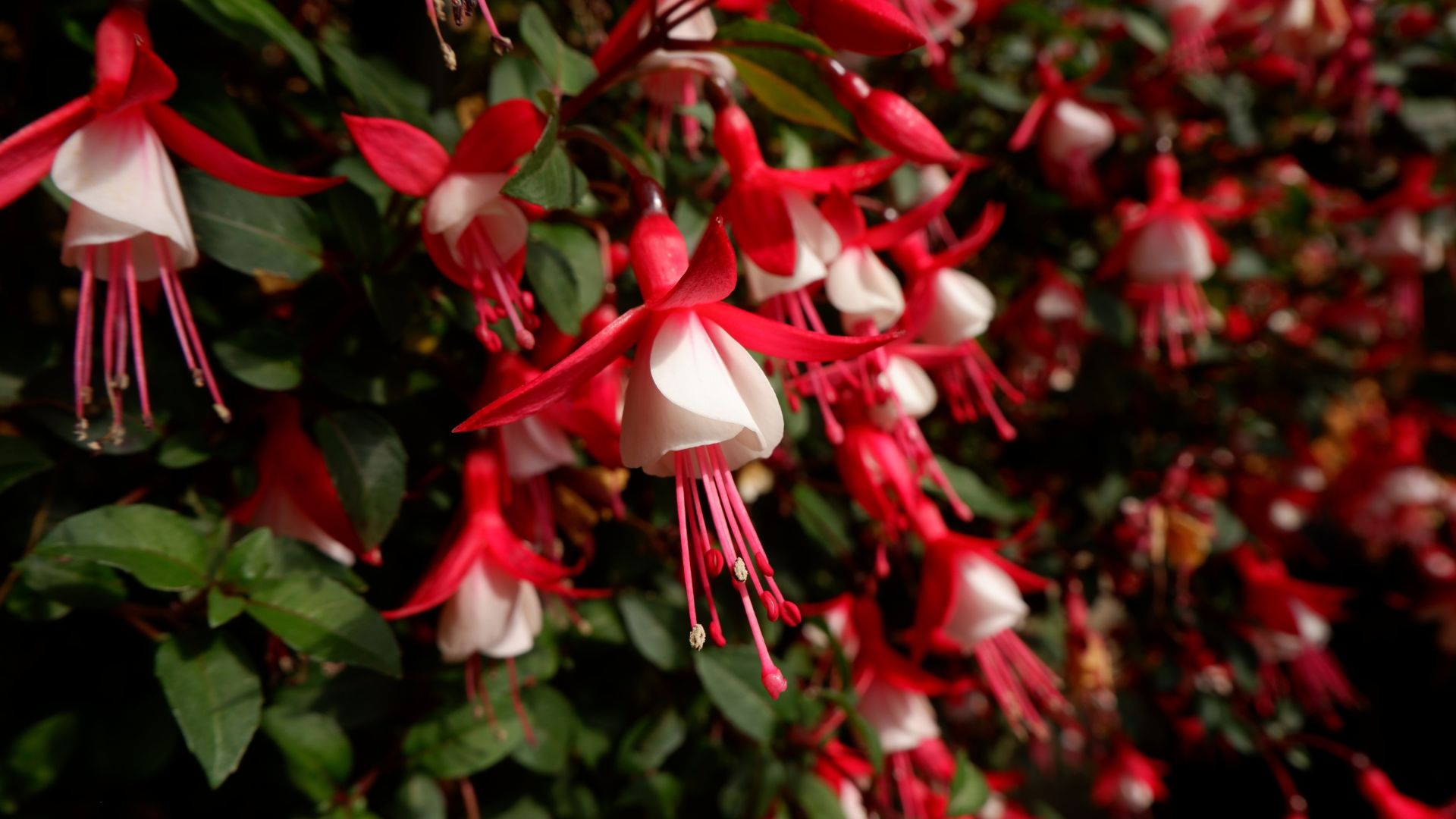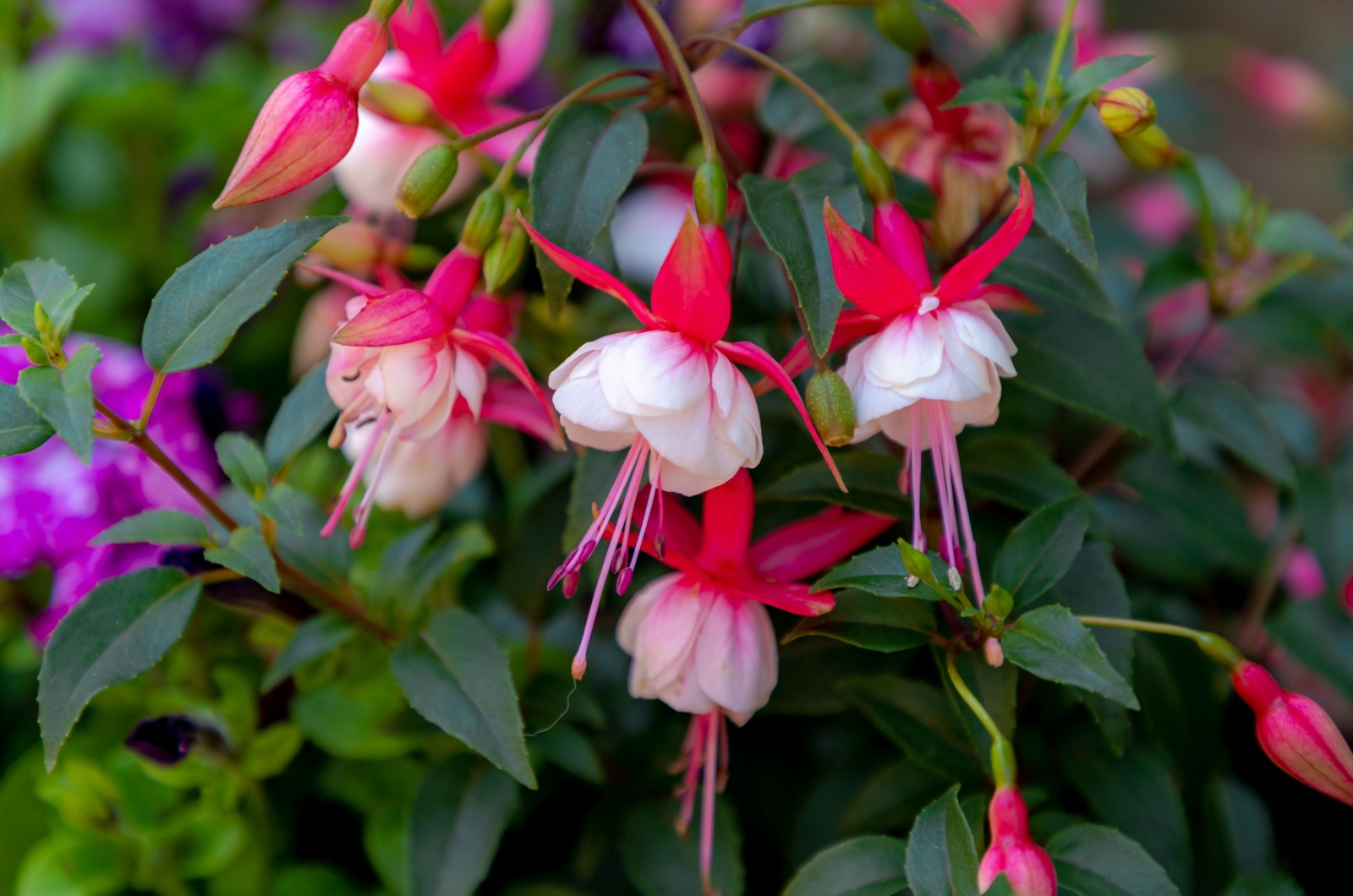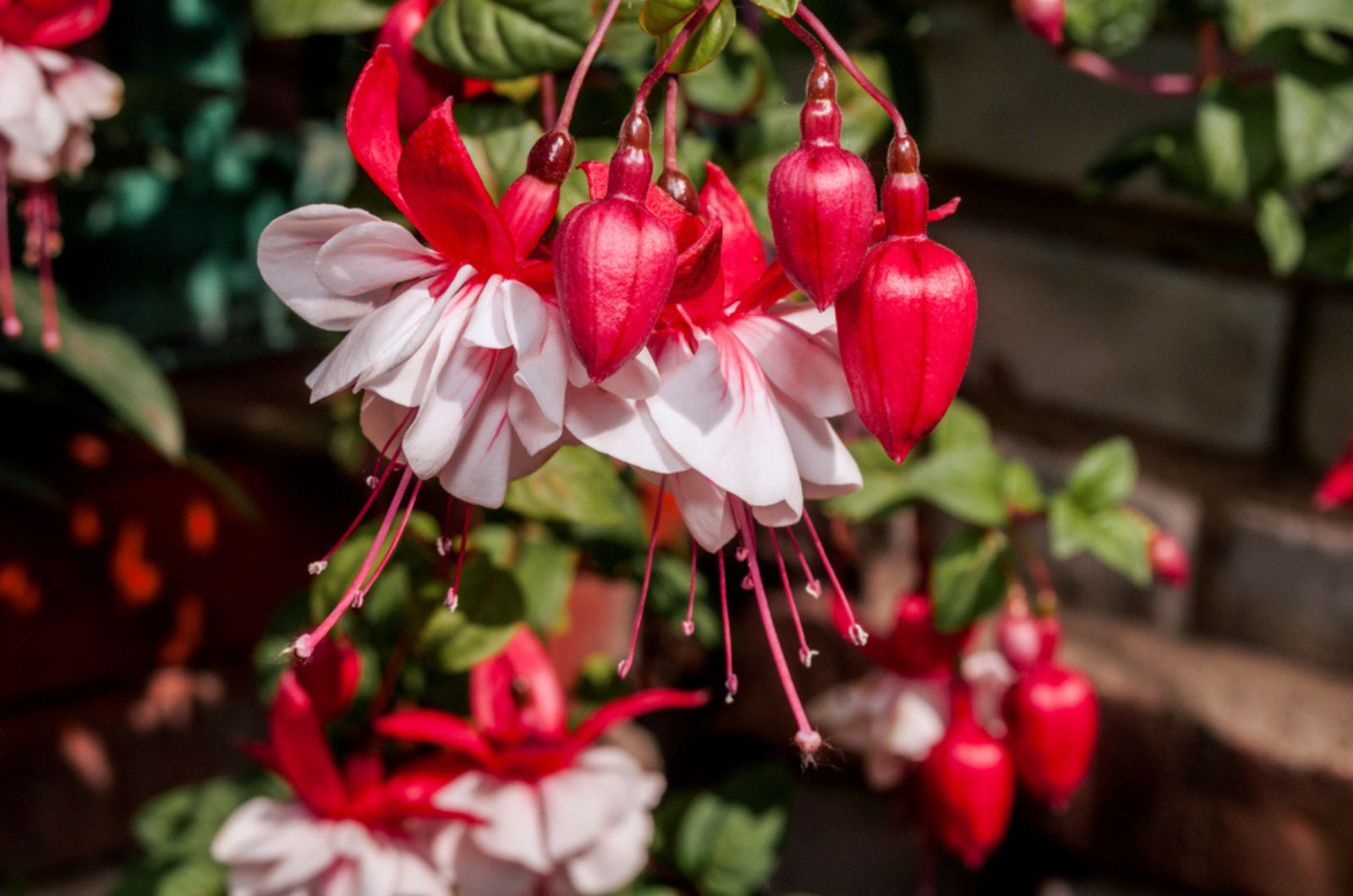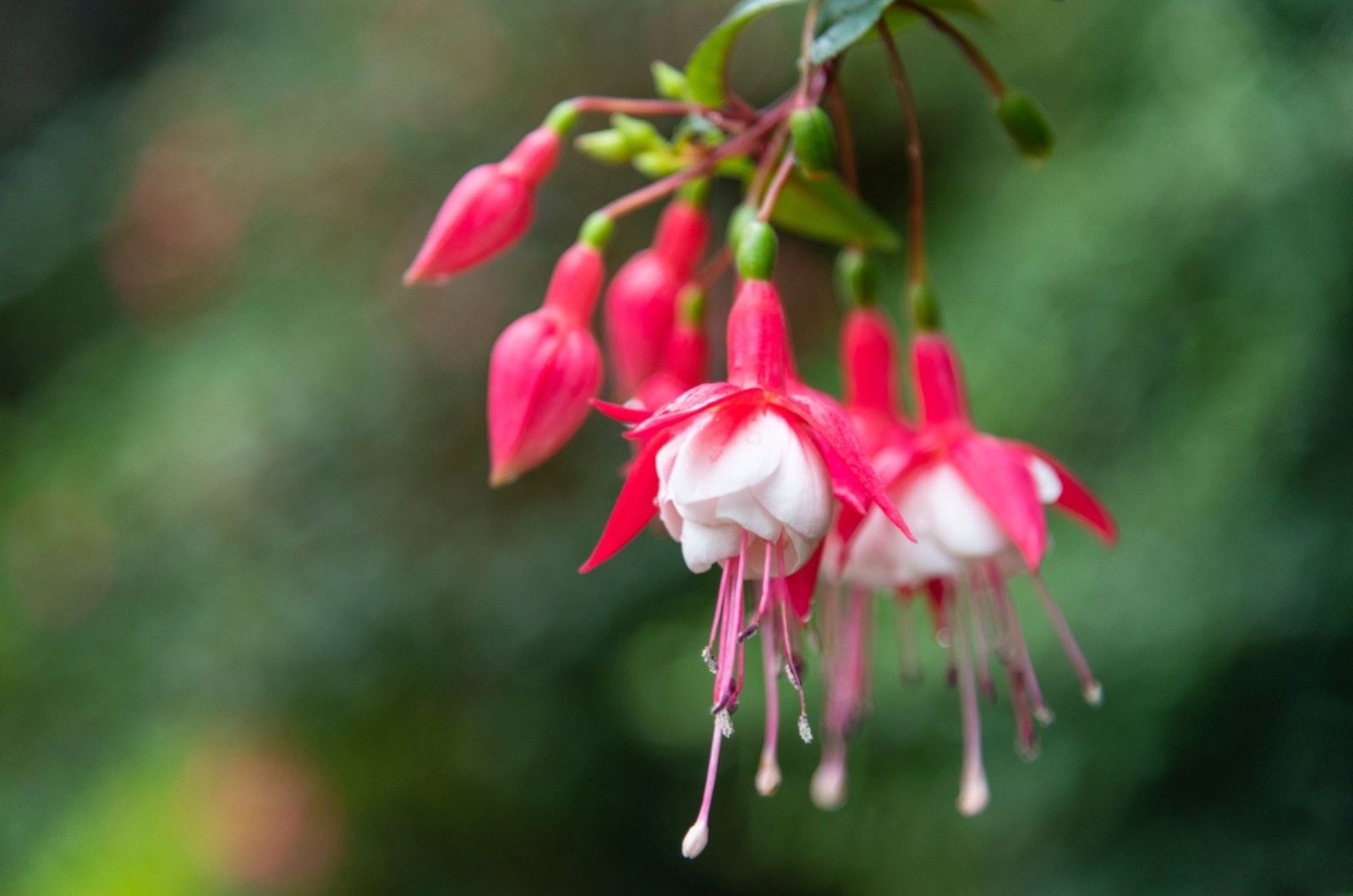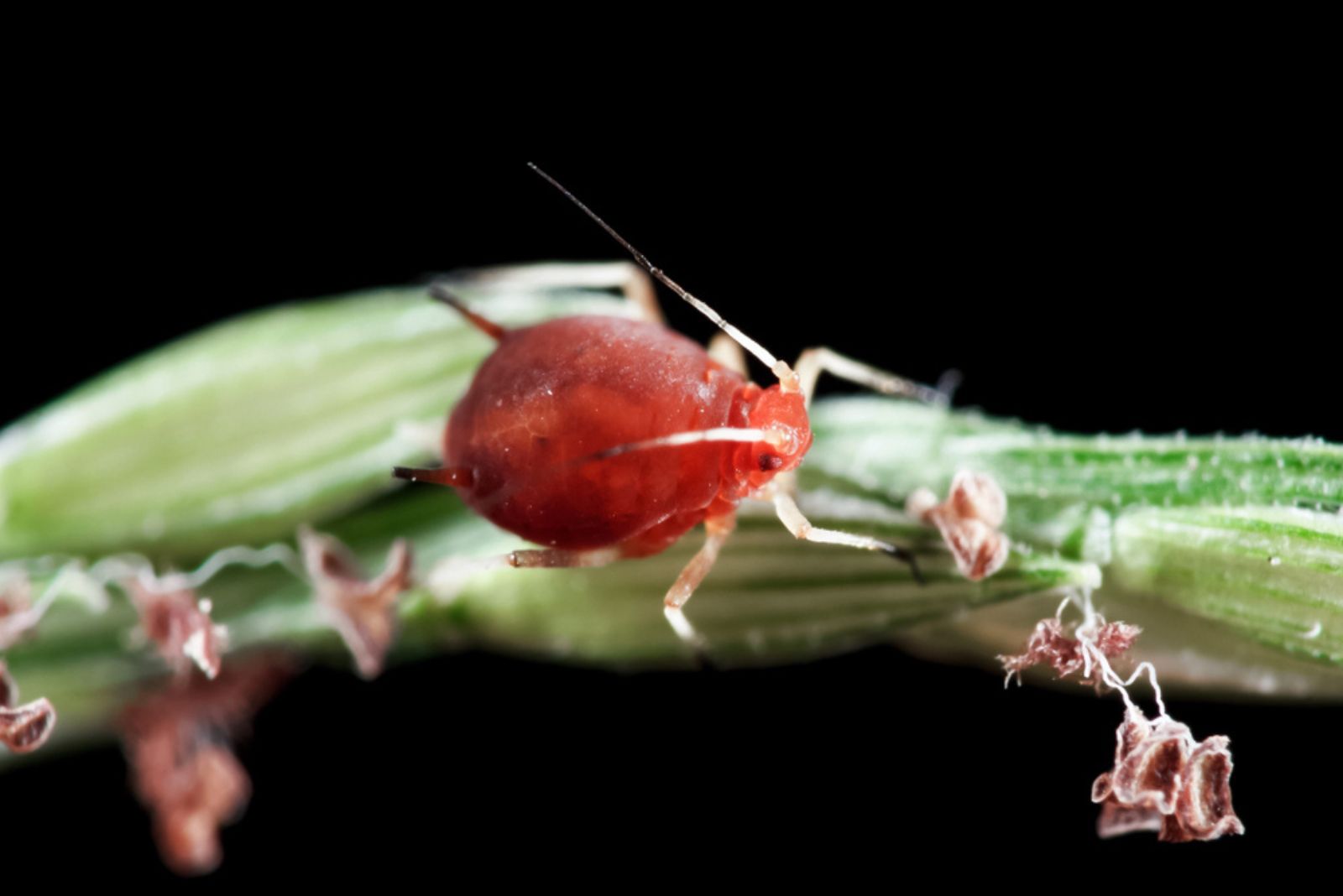The vibrant blossoms and graceful leaves of Fuchsia plants adorn landscapes worldwide. There are numerous varieties of Fuchsia plants but since the festive season is just around the corner, I have something special for you.
Meet the Fuchsia Jingle Bells, a captivating variety with dropping blossoms and colors that remind you of Christmas. This semi-trailing beauty will fit into any landscape design and, best of all, it’s suitable for novice gardeners.
In this article, I’ll show you how to grow and care for the Fuchsia Jingle bells and get an abundance of its splendid blooms.
Let’s get started!
What Is The Fuchsia Jingle Bells?
Jingle Bells is a deciduous trailing shrub that can reach up to 2 feet tall and wide. It’s a semi-trailing variety and features ovate, toothed, deep green foliage.
When the summer arrives, it generates lovely red tubes with red sepals and single white corollas.
You can plant it in beds or borders, and it makes an excellent addition to informal or cottage gardens. For me, Fuchsias are one of the best plants for hanging baskets.
But beauty isn’t the only reason why the Jingle Bells Fuchsia deserves a spot in your landscape. The lovely blossoms attract hummingbirds and butterflies, which are very beneficial for your garden.
Another reason to grow a Jingle Bells is because it’s super easy to maintain. Let’s see what this Fuchsia needs to thrive!
A Complete Care Guide
The care guide for Jingle Bells Fuchsia is similar to the growing guide of all hardy Fuchsias.
Here’s a short overview of the Jingle Bells Fuchsia’s needs.
• Ideal location: Partial shade
• Watering needs: Moderate
• Perfect soil type: Moist but fast-draining
• Fertilizer: Diluted liquid fertilizer
• USDA hardiness zone: 7 through 9
Light Requirements
Many growers describe Fuchsias as plants that thrive where others can’t. They’re actually one of the best plants for shady spots.
Jingle Bells may grow well in sunny spots outdoors but it’s essential to ensure some shade during the hot summer days.
Watering Schedule
Jingle Bells doesn’t tolerate dry conditions and you’ll need to be careful with the soil moisture content.
Never allow the soil of your Fuchsia to dry out entirely; instead, irrigate when the top 2 inches of the growing substrate dry out.
Be careful not to waterlog your soil because your Jingle Bells can end up with root rot.
Ideal Soil Type
When selecting the soil for your Jingle Bells Fuchsia, you need to consider 2 factors: soil structure and fertility.
These plants won’t do well in too loose soil types, so avoid sandy growing substrates. But make sure the soil isn’t too compact because it will retain too much water and you risk root rot in your Fuchsia.
You can purchase a standard soil mix for your Jingle Bells and amend it with perlite, pumice, and some compost.
Fertilizer
Compared to other common garden plants, Jingle Bells are heavy feeders. You’ll need to fertilize these Fuchsias regularly during the growing season.
I recommend using diluted liquid fertilizers; a combination of fish emulsion and seaweed will suffice.
Pruning
Jingle Bells will benefit from pruning and the best time to cut back Fuchsias is in late spring.
However, you can remove any damaged or diseased branches at any time of the year, but heavier pruning should be reserved for late spring.
The good news is that Jingle Bells recover from pruning quickly and will most likely generate even more blooms the next season.
How To Propagate The Fuchsia Jingle Bells
Now I would like to show you how to get more Jingle Bells, and guess what? It’s completely free!
Taking the Fuchsia cuttings is straightforward and, luckily, these plants root easily.
Here are the steps.
1. Find a healthy stem on your Jingle Bells and cut off a 3-inch-long portion from the stem tip.
2. Get rid of the leaves on the lower part of the cutting and dip the end of the Jingle Bells cutting in a rooting hormone.
3. Fill a tray with seed-starter mix or use a combination of sand, perlite, and peat moss, and put the cutting in it.
4. Take a plastic lid and cover the pot with your Jingle Bells cuttings.
5. Remove the lids in about 3-4 weeks or when the cutting generates new roots.
6. Repot your Jingle Bells cutting when the leaves are a few inches long.
Common Issues
Root rot disease commonly affects Fuchsia plants grown in too compact soils. To avoid it, opt for a free-draining growing substrate and water when the top inch of the soil dries out.
Some pests that attack Jingle Bells include aphids, spider mites, and whiteflies. There are various methods for removing these pests but I use insecticidal soap and it works perfectly.
Jingle Bells is a perfect plant for those who are eagerly awaiting the festive season. Make sure to follow our guidelines for maintaining this Fuchsia and it will reward you with its splendid blossoms the next season!

